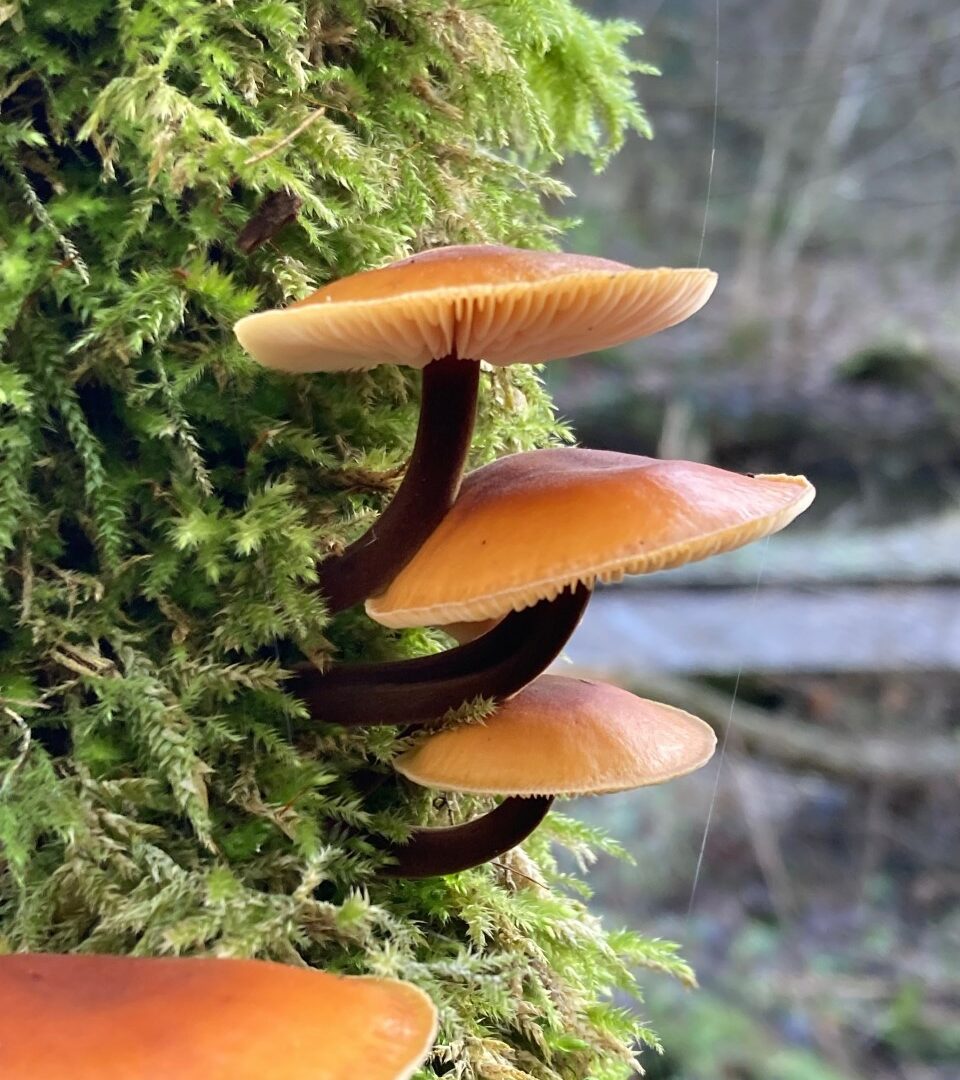
Look Wild: Fungi Forays
-
Date posted: 24/02/2022
-
Time to read: 10 minutes
This month we are heading to the North York Moors National Park for a Fungi Foray. While Autumn is undoubtedly the prime season for mycophiles (mushroom enthusiasts), autumn and winter sees an explosion in numbers and diversity that can be found in forests, wild spaces and urban habitats across the country. The fungi world is beautifully complex, and there are fantastic species to get out and see all year round – including February!
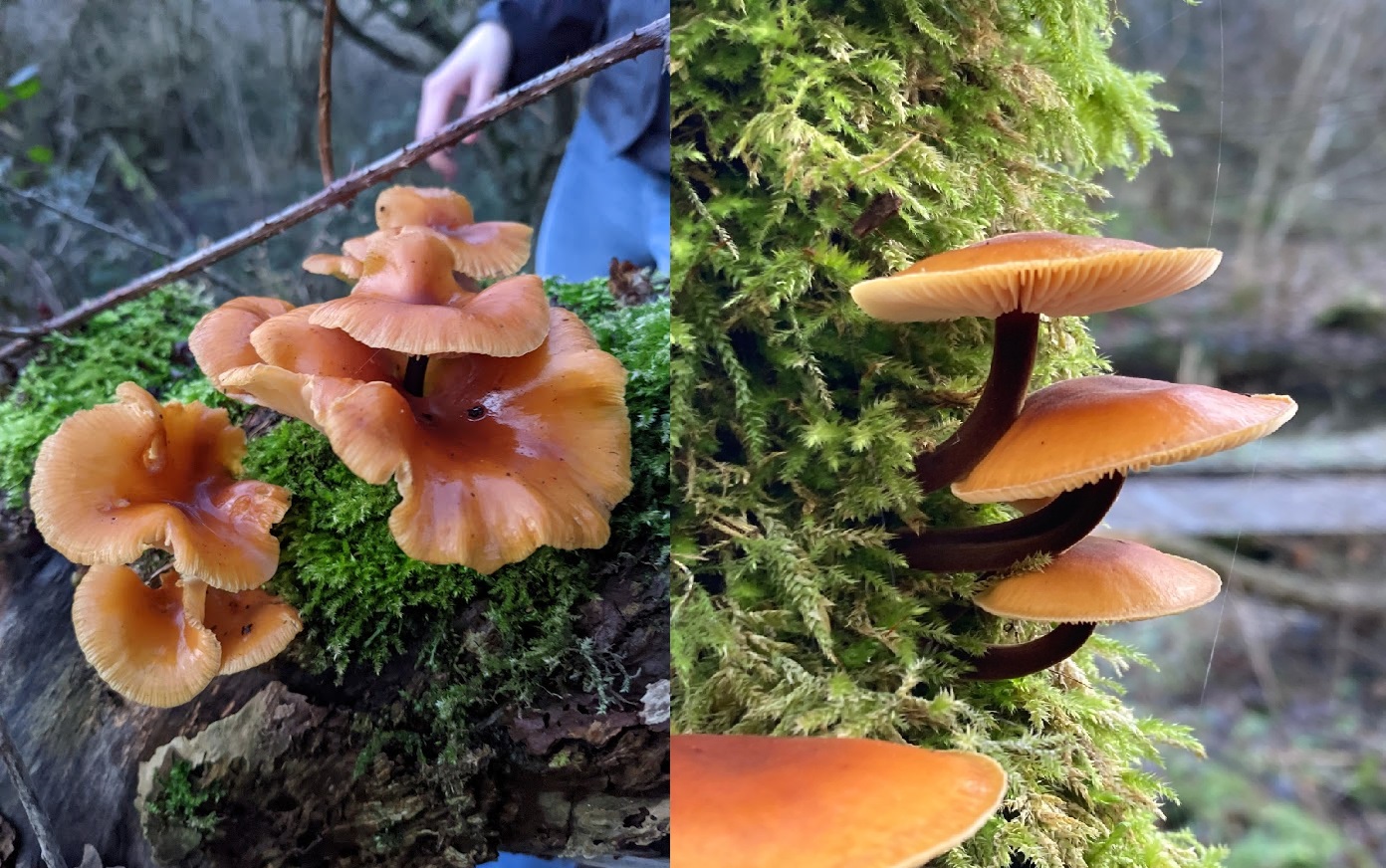
Flammulina velutipes – The velvet shank
This prized mushroom pops up over winter, and is a delightful find. They are mainly found on dead stumps of deciduous trees and can grow in great numbers. Many people have eaten velvet shanks without realising! They are commercially cultivated as enoketake for East Asian cuisine. The low light growing conditions make enoketake grow long and white with a very small cap – almost unrecognisable to its wild counterpart.
If intending to harvest velvet shanks, one poisonous lookalike to be particularly aware of is Galerina marginata, aka the funeral bell. Check the stems – the funeral bell has a light brown to dark brown stem with a small skirt, whereas velvet shanks have a black velvety stem with no skirt. That said, the velvet shank’s stem can be light brown in younger mushrooms. A spore print should be taken to help confirm ID. The funeral bell has a brown spore print and the velvet shank’s is white.
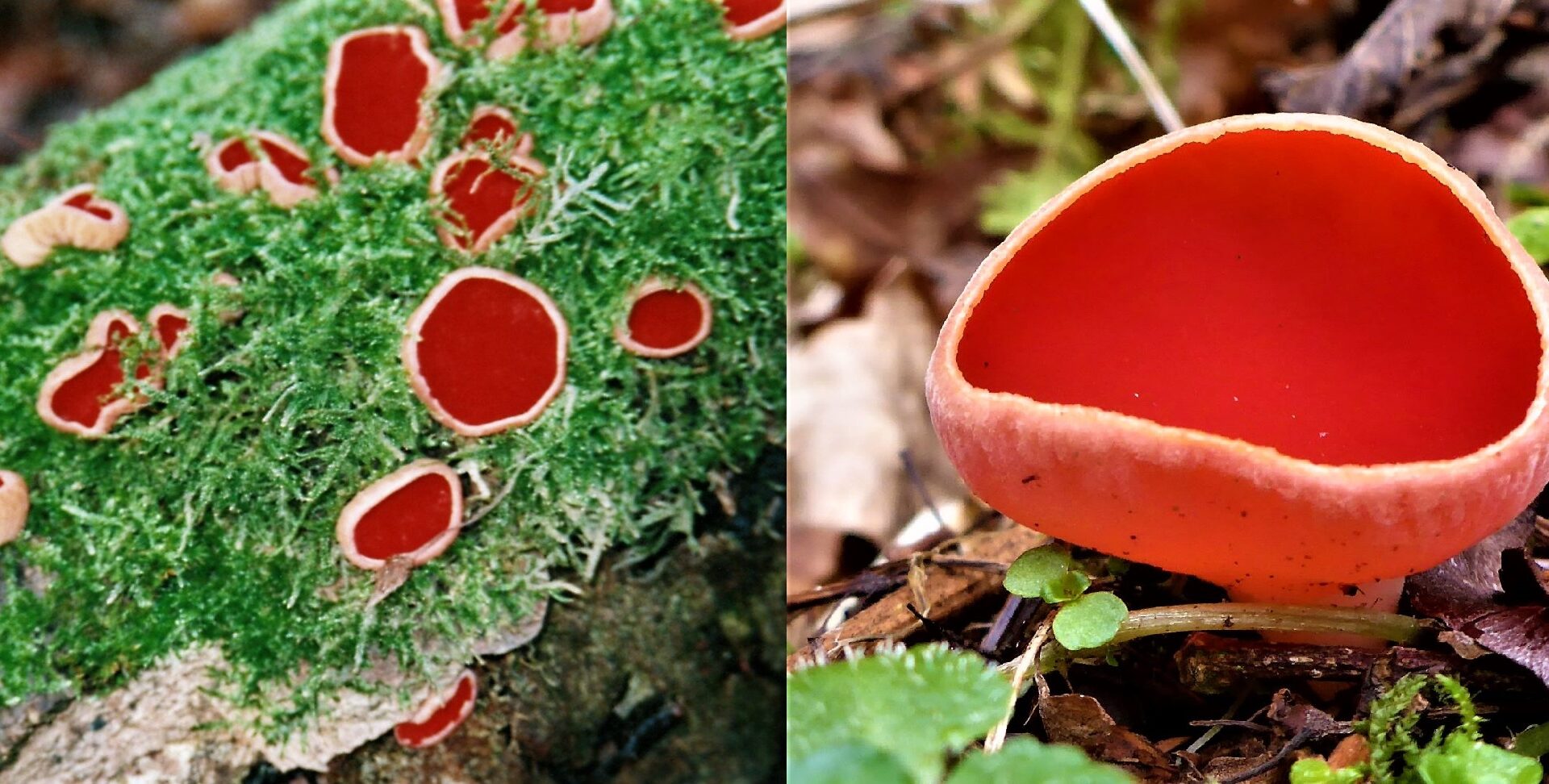
Sarcoscypha austriaca and Sarcoscypha coccinea – The scarlet elf cup and the ruby elf cup
These colourful mushrooms are a delightful find on a cold winter’s day. They grow in damp conditions on deadwood on the forest floor. In European folklore it was said that woodland elves would visit these mushrooms and drink the morning dew collected in the cup!
These two striking mushrooms are grouped together as they are almost identical in appearance and commonly confused. The main identifying feature between the two is only visible under a microscope – coccinea has uncoiled hairs on the outside of the cup and austriaca has coiled hairs.
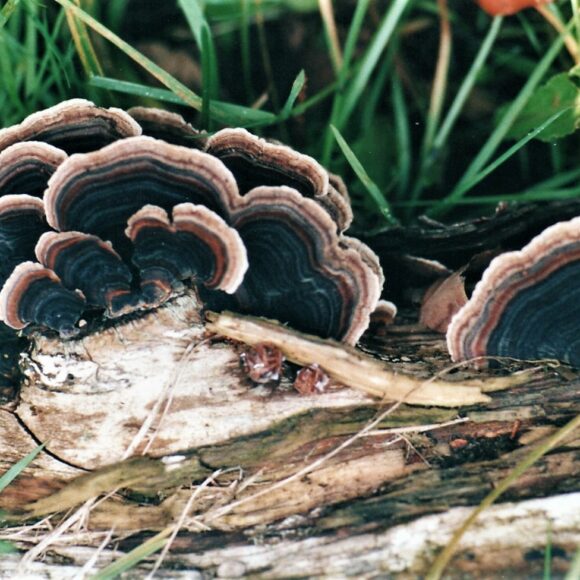
Trametes versicolor – Turkey tail
Turkey tail, formerly known in the UK as the many-zoned polypore, is an attractive bracket fungus commonly found growing in overlapping tiers on decaying stumps of deciduous trees. The surface of this mushroom is velvety to the touch when young, and becomes smoother with age. The rings on the surface are variable specimen to specimen, but can be a dazzling mix of reds, blues, oranges and browns, with the outer edges tending to be pale. In the past it has been used to make beautiful table decorations and even to decorate hats!
Versicolor is considered by many to be a medicinal mushroom and has long been used in Chinese medicine. There is growing hype around its immune boosting properties, and is currently being trialled as a supplement to increase the efficiency of certain cancer treatments.
Observations by Mike Cruse
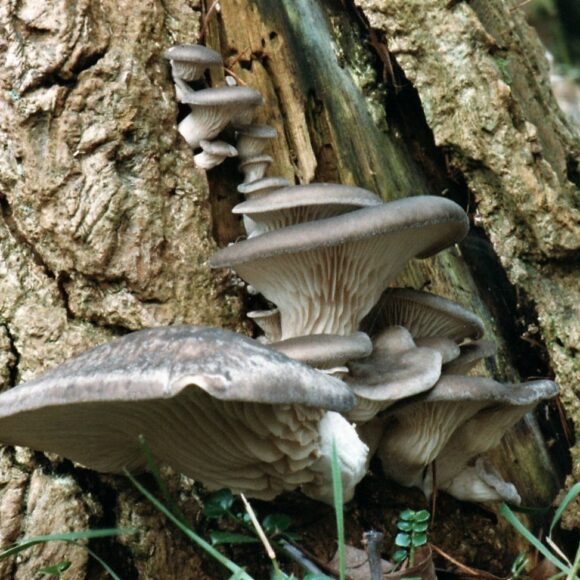
Pleurotus ostreatus – The oyster mushroom
This mushroom is gaining popularity across the UK for its culinary uses, and you may well have seen it sold in your local supermarket.
Oyster mushrooms are primarily known as a wood decay fungus (white rot). They are also one of the best known fungal nematophages which means they are capable of killing and consuming various nematode species. They are far from unique in this aspect – scientists are discovering that more and more fungal species have this ability, but P. ostreatus’ slightly gruesome methods are impressive nonetheless. They release powerful toxins that quickly immobilise the worms upon contact. It causes a massive calcium influx and this leads to rapid cell necrosis. The fungal hyphae then proceed to penetrate and then grow though the body of the nematode and digest their nitrogen-rich meal. Drug resistance in parasitic nematodes is a growing problem and a threat to the health of humans, crops and livestock. As P. ostreatus targets nematodes in a different way to our commonly used drugs, it could potentially provide the basis of new, novel bio-control agents in the future (Lee et al., 2020).
Observations by Mike Cruse
Citizen science projects like Look Wild are fantastic for increasing biological records. For example, Porpolomopsis calyptriformis, the pink waxcap, was once thought to be very rare and was placed on Britain’s Red List in 1992. Concern for this species lead to publicity and increased surveying. It is still considered relatively rare but these efforts resulted in it being discovered to be more common than first thought and it was left off the 2006 Red List.
The North York Moors has a fantastic array of fungal diversity. Below are some rarer February fungi from the National Park. See if you can spot any next time you go out for a foray!
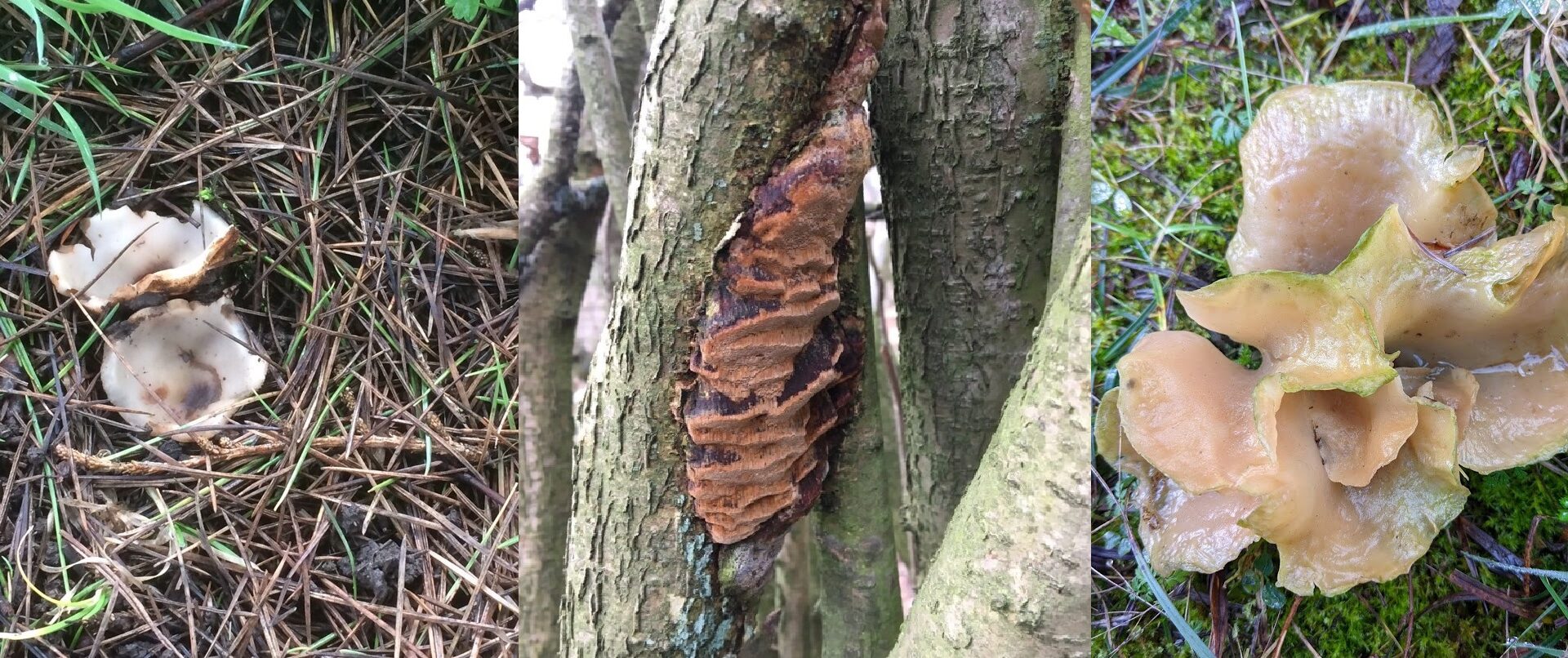
Note: foraging in England and Wales is not illegal as long as what is collected is not intended for commercial use. However, please remember that most of the North York Moors is privately owned and you’d need permission from the landowner to range over private land.
A lot of edible wild mushrooms have several inedible lookalikes that can make you seriously ill or even kill you. If you are intending to eat one, make sure you are 100% sure of what you have picked and never rely solely on apps – they are fun and can often get you in the right ball park but can miss important ID features. Never munch on a hunch!
Picking mushrooms doesn’t necessarily harm fungi but over picking may reduce its chance of reproducing so leave some behind to disperse their spores and leave rarer species be.
With spring just around the corner, let us make the most of winter while it’s still here. If you’ve been inspired to get out into nature, you can share any photos or observations with us and get featured on our social or our newsletter! Send your observations to connect@nationalparks.uk
This Blog was written by Ellie Davison, Conservation trainee at North York Moors National Park.
Join in with Look Wild today and your observations could be featured!
References
Lee, C., Chang, H., Yang, C., Wali, N., Shie, J. and Hsueh, Y., 2020. Sensory cilia as the Achilles heel of nematodes when attacked by carnivorous mushrooms. Proceedings of the National Academy of Sciences, 117(11), pp.6014-6022.